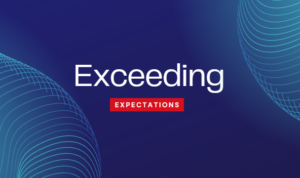
Talent sourcing involves more than just securing an accepted offer; it requires strategic thinking and data-driven decision-making. The process can be compared to cooking a meal, where various factors such as ingredients, time, management, and tools are crucial to achieving the desired outcome. However, talent sourcers often get stuck in the behind-the-scenes process of candidate engagement. As the industry shifts towards proactive outreach, finding and engaging passive talent has become a challenge. With increasing competition in niche industries, it is important to recognize the value of talent sourcers and their ability to deliver strategic plans and ROI to business leadership teams. It’s time to bring talent sourcers into the spotlight and acknowledge their crucial role in the talent acquisition process.
Intake meetings:
Once job approvals are obtained, the initial step is to hold an intake meeting with the hiring manager. Here are some tips to help you prepare for it:
Preparing for the intake meeting with the hiring manager is critical for talent sourcers to ensure that they understand the position and the expectations of the hiring manager. To prepare, talent sourcers should review the job description and identify any potential gaps or areas where further clarification is needed. It is important to ask questions during the meeting to gain a deeper understanding of the position, such as the key responsibilities, required skills and experience, and the ideal candidate profile. Talent sourcers should also take notes during the meeting to ensure that they capture all relevant information and can refer back to it later in the recruitment process. By thoroughly preparing for the intake meeting, talent sourcers can better align their sourcing and recruitment strategies to meet the needs of the hiring manager and ultimately, find the best candidate for the role.
Create a talent mapping plan:
Talent mapping is a valuable tool for talent sourcing planning as it allows talent sourcers to identify and track potential candidates for current or future positions within an organization. By conducting talent mapping, talent sourcers can gain insights into the talent landscape, including the availability of talent, key competitors, and emerging trends in the industry. This information can inform talent sourcing strategies and help to build a talent pipeline for critical roles. Additionally, talent mapping can help organizations to proactively address succession planning and identify areas where talent gaps exist, allowing them to plan for future hiring needs. By utilizing talent mapping in talent sourcing planning, organizations can better understand the talent market and make data-driven decisions to attract and retain top talent, ultimately leading to improved business outcomes.
Take on projects:
Talent sourcers can take on projects outside of talent sourcing by demonstrating their expertise and willingness to contribute to the recruiting team. One way to do this is by taking the initiative to identify areas where their skills can be leveraged to support the team, such as improving candidate experience, implementing new recruiting technologies, or developing employer branding initiatives. Additionally, talent sourcers can seek out opportunities to collaborate with other teams within the organization, such as marketing or human resources, to support broader talent management goals. By proactively seeking out and contributing to projects outside of talent sourcing, talent sourcers can demonstrate their value as strategic partners and expand their skillset, ultimately contributing to the overall success of the recruiting team and the organization as a whole.
Taking on leadership opportunities:
Talent sourcers can take on leadership opportunities by actively seeking out and demonstrating their leadership potential within the recruiting team. One way to do this is by taking on additional responsibilities and proactively seeking out opportunities to lead projects or initiatives. Talent sourcers can also seek out mentorship or coaching from senior leaders within the organization to develop their leadership skills and gain exposure to broader business functions. Additionally, talent sourcers can work on building strong relationships with key stakeholders, such as hiring managers or human resources leaders, and demonstrating their ability to drive results and think strategically. By consistently demonstrating their value as a leader and contributing to the overall success of the recruiting team and the organization, talent sourcers can position themselves for leadership opportunities and advancement within the company.
Taking an holistic approach to talent sourcing:
A talent sourcer is more than just getting a hire at the end of the day because their role involves much more than simply finding candidates for open positions. Talent sourcers are strategic thinkers who rely on data-driven decisions to drive outcomes and add value to the overall recruiting process. They are responsible for proactively engaging with candidates, building relationships with key stakeholders, and leveraging market insights to inform sourcing strategies. Additionally, talent sourcers play a critical role in developing and implementing employer branding initiatives, improving candidate experience, and supporting broader talent management goals. By taking a holistic approach to talent sourcing and recruitment, talent sourcers can help organizations attract and retain top talent, ultimately contributing to the overall success of the business.
How to exceed expectations in a talent sourcing role?
There are several ways for a talent sourcer to go above and beyond in their job role and deliver exceptional results:
1. Create an intake template form
2. Create a process to prioritize specific recruiting reqs
3. Create a talent mapping – labor analytics plan
4. Pull funnel metric data using your recruiting dashboard in the ATS system
5. Strategize on to decrease your overall time to fill metrics
6. Participate in MBR leadership discussions
7. Create a personal talent sourcing calculator and tracker documents
8. Take on additional projects within your greater org
9. Take the time to mentor and lead group training discussions
10. Work to build a more efficient interview team
Recommended Reading:
Scaling up: how to get promoted as a recruiter?
Excel hacks for recruiters and talent sourcers
Centralized vs Specialized Recruiting Team Models
- The Art of Context: Why Rushing to Conclusions Can Lead Us Astray - April 25, 2024
- Unlocking the Power of Perplexity AI: Why Recruiters Should Utilize This Revolutionary Tool - February 11, 2024
- Exploring AI Interviewing Assessment Tools: A Comprehensive Review - November 30, 2023
